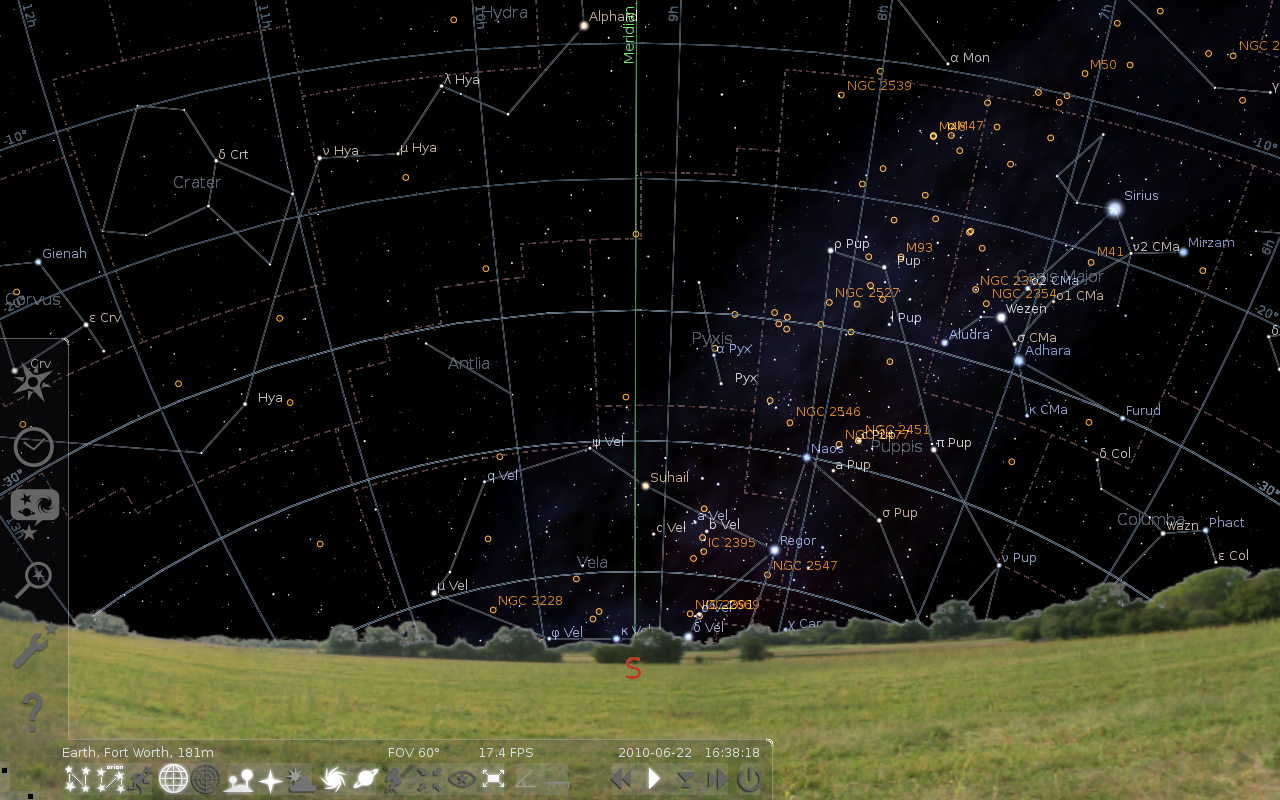
This will also need to be uploaded to the VPS. A single positive image is created that contains the object of interest.This will need to be uploaded to the VPS. A negative image dataset exists, consisting of several thousand images that don't contain the object of interest.The whole process of computer vision using HAAR cascades is quite confusing at first, so this Step describes the logic in a little more detail:
Stellarium software png windows#
WinSCP - this is used to perform file transfer from the Windows PC.


Stellarium - this is virtual planetarium/astronomy software, freely available.Initially I hired a server with 8GB of RAM and Ubuntu 16.04.6 (LTS) 圆4, and later a second one to double the rate at which I could train cascades, although you'll only need a minimum of one. A Linux Virtual Server (VPS) is needed to perform the HAAR cascade training processes.Once the cascades are trained using the VPS, they can be downloaded to your Windows PC, and Python can be used to run the image recognition program in a Windows environment.
Stellarium software png Pc#
You will be able to control the server from a Windows PC using an SSH client such as Putty. As an experiment, I downloaded and ran OpenCV on my Raspberry Pi 3B+, which was successful, although classifier training is a very RAM intensive process, so if you wish to do it at any speed, the recommended route is to hire a Linux Virtual Server (which can be surprisingly inexpensive actually) for a few days/weeks/months and use that as a dedicated environment in which to run the classifier training. OpenCV is a Linux based library, so although it is supposedly possible to operate it well on Windows, you will have a much easier time running it in a Linux environment (take this from me and a lot of days trying to get it fully working on Windows!). Stellarium - Open Source astronomy software. OpenCV - Open Source Computer Vision, a library of computer vision tools. HAAR - Haar-like features are a type of image feature used for classifier training. Learning about computer vision is made slower by the stupid amount of specialist terms used, so I'll define some for us here:Ĭascade - A classifier trained to identify a specific target object.įiducial Marker - A marker adding a point of visual reference to an image. There are many other potential applications of computer vision star recognition I believe, but I think this is the coolest! I used it to illustrate this instructable as the original application of the computer vision star recognition system was to be for an orientation sensor for amateur-made CubeSats, using a Raspberry Pi V2 Camera. The cover photo of this Instructable is of a concept 3U CubeSat design that I participated in the design of. Amateur astronomy and orientation methods are a big interest of mine, see my previous instructable featuring an Arduino Star-Finder for Telescopes.Hopefully by writing this Instructable other, more experienced, makers will be inspired to work on this concept and contribute to the GitHub and this instructable via comments on this page. I'm not a trained programmer myself, so this project really pushed my understanding.


Stellarium software png how to#
This instructable will describe to you how to create a computer vision program to automatically identify star patterns in an image.


 0 kommentar(er)
0 kommentar(er)
